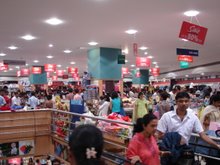Prices of 200 medicines set to fall
Prices of commonly used medicines are expected to fall with the government planning to cap trade margins paid by companies to retailer at 50%. The move is expected to push down prices of over of around 200 drugs, including those used as analgesics, cough syrups, tonics, antibiotics, medicines used to treat infectious diseases, bronchial disorders and lifestyle diseases such as diabetes and hypertension and anxiety disorders, may come down by more than 50% in a large number of cases. For bringing in uniform trade margins, government has proposed marketing expenses, or MAPE in trade jargon, of 300% be added on to the ex-factory price and trade margin of 50% be calculated on the maximum retail price (MRP). While patent holders are known to charge a high premium in the name of innovation, large margins are common even for non-patented medicines which are sold under generic names or the branded generics. In some cases the trade margins go beyond 1,500% of the cost at which the medicine is sold to the retailer. For instance, a strip of 10 tablets of Ceticad bought by the chemist at Rs 1.60 from the manufacturer, is sold at Rs 26 in the market, translating into a margin of over 1525%. If government is able to cap margins, cost of the medicine for the consumer will drop to Rs 6.40. Ceiling on trade margins has proved to be a bone of contention between the government and industry, with the latter unable to do much. Last year, the industry had agreed to cap margins of 886 formulations of 100-odd drugs, but the move was not implemented by all companies. The issue of huge margins came into light nearly three years ago when chemicals minister Ram Vilas Paswan ordered a market survey of prices of three drugs - Cetrizine, Omeprazole and Nimesulide. "If the norms are issued, then the entire industry (branded generic and generic-generic categories) would implement it," sources said. They said the 300% limit has been proposed after factoring in the cost incurred on manufacturing by smaller players. The move would affect 5-7% of the Rs 30,000-crore pharma market, and almost all major manufactures who are present in these categories. The ministry intends to put out draft guidelines and will take a final decision only after consulting the industry. Sources said the National Pharmaceutical Pricing Authority will monitor margins charged by these companies, once guidelines are issued. "If companies are not agreeable to limiting margins, then they would be asked to switch to the branded category," sources added. For branded drugs, which are outside the purview of price control, industry had agreed to cap margins at 10% to the wholesaler and 20% to the retailer.
Courtesy: EconomicTimes
For more detail on Retail India visit: http://www. retailindia.tv


No comments:
Post a Comment